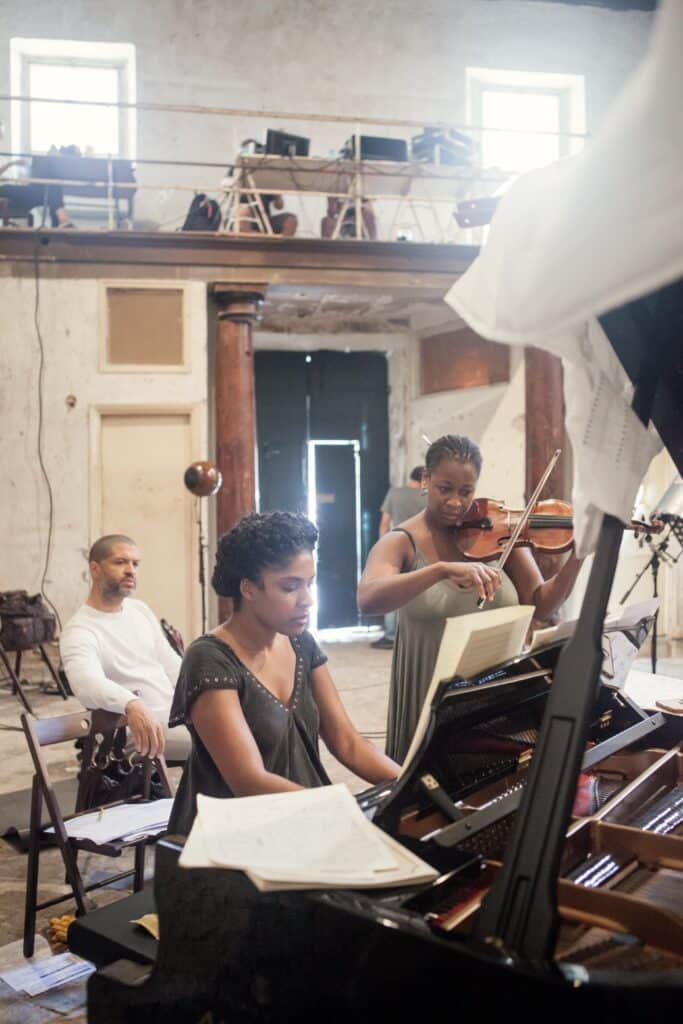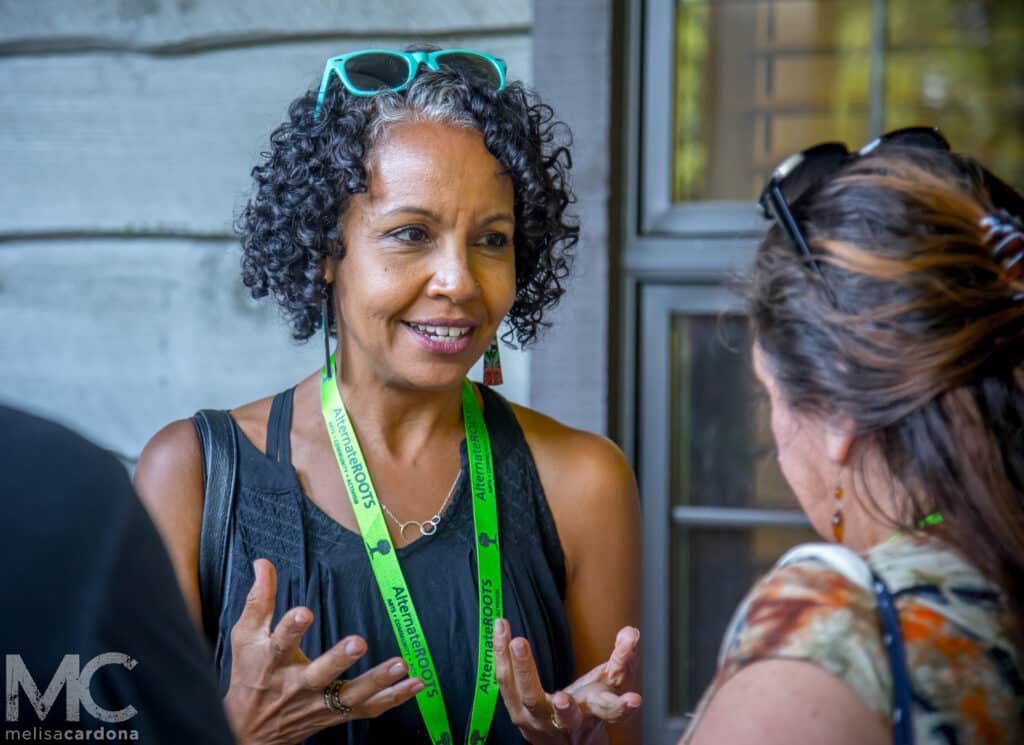CMA Duos: Caroline Shaw & Jason Treuting
The composer and percussionist discuss their recent collaborations, juggling, John Cage, and how much of a composition should live on and off the page.

Composer, singer, and violinist Caroline Shaw has emerged as one of the most fascinating artists of our time, a musician who dispenses with stylistic hierarchies while retaining a deep respect for traditon. She earned a Pulitzer Prize in 2013 for Partita for 8 Voices, a work she wrote for the vocal ensemble Roomful of Teeth, of which she is a long-time member; and in 2019, Orange, an album of her music commissioned and performed by the Attaca Quartet, won a Grammy. More recently, she’s made two highly collaborative albums with Sō Percussion—Narrow Sea, with singer Dawn Upshaw, and Let the Soil Play Its Simple Part—and embarked on an ever-expanding array of multi-discplinary projects, among them works with the Gandini Juggling troupe and choreographers Justin Peck and Helen Simoneau.
She spoke with Jason Treuting, a founding member of the paradigm-shifting Sō Percussion, whose open-ended work has exerted a broad impact on contemporary percussion music, mixing whimsical imagination, fervent experimentation, and bold collaboration. Whether commissioning diverse, young composers like Bora Yoon, Claire Rousay, and Shodekeh Talifero, working with traditional groups from around the globe, or masterminding vivid theatrical productions, Sō Percussion has legimately changed what it means to be a percussion ensemble today.
The following conversation took place over Zoom during a rare lull in the two musicians’ busy schedules.
Caroline Shaw: Hey, Jason. How’s it going? Where are you?
Jason Treuting: I’m in Towson, Maryland. We did two shows at Towson University.
CS: I’m visiting my girlfriend in Portland. We were working on a little music, and I’m doing some writing here. Before that, I was in The Hague in Netherlands, working with the Gandini Juggling troupe. I love these people. It’s one of my favorite projects I’ve ever done. They’re the troupe that does the juggling in the Mets Opera’s Akhnaten, by Philip Glass. You’ll see them in the back. They’ve done a lot of different projects. One of the recent ones was with [the work of late choreographer] Pina Bausch, and this new project is partnering with the Merce Cunningham Trust. It’s actually a great combination of living with different patterns and difficulty, but also this gesture to Vaudeville and gesture to Cage. I’m there in the background, making music with all sorts of little tools and toys, and it’s different every time.
JT: Were these shows or workshops?
CS: These were shows. We started in January in London. I’m doing it all. There’s a little bit of simple live singing, and it kind of builds in a little bit of looping and then sampling, and then at the end I basically trigger a bunch of my music in small chunks. I’ve gotten them to sing a little tiny bit. I wanted them to sing more.
JT: Let it be known!
CS: Let it be known! They wanted me to juggle and I can’t. It’s an absolute mental block. I went into it thinking, I’m gonna be really good at this. And it turns out, I’m terrible. I cannot do it. It’s like trying to ride a bike. It’s easy for some people. I cannot do it.
JT: When I was a freshman in college, I had a guy who lived next door who was a juggler. I can do three and feel good about it.
CS: It’s impressive. They’ll do it in a certain rhythm and then different patterns, like, Okay, I’ve got five balls, I need this one to go up for this long to line up with this thing. They’re also really delightful people. They’re from eight different countries. It’s a good vibe. Sean Gandini and Kati [Ylä-Hokkala], his wife, run the company. They’re based in London. Have you ever done anything with jugglers? Or juggling? It seems like a natural fit. I thought about you guys a lot in terms of patterns that rotate and line up and the delight and wonder of it.
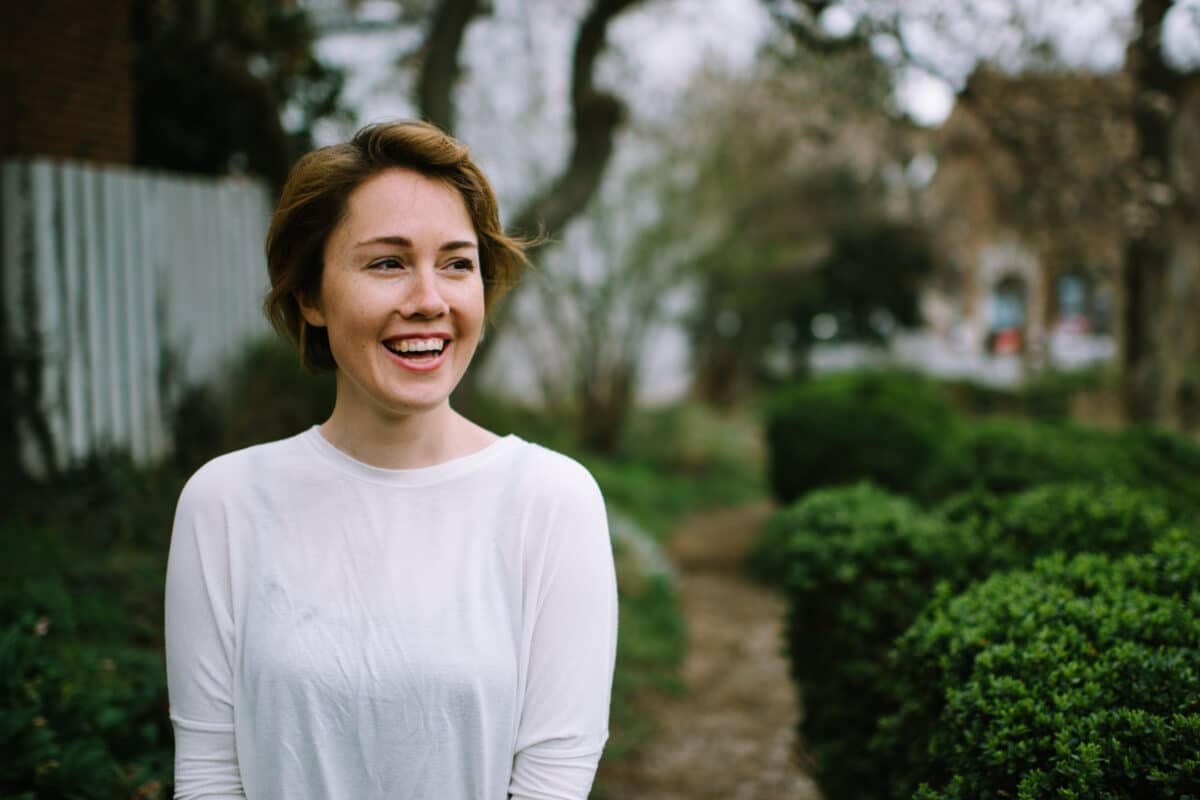




JT: When I hear you say it, I understand why it could be natural. And I would love to do it, but we never have. When you say that at the end of this piece you start triggering a bunch of your music . . . is it little bits of music happening?
CS: I have a Logic session open for the whole thing. Sometimes, I’m playing and I’m just picking things out. When I first started doing it, I had about twenty-five different tracks of things . . . string quartets, orchestra, voice stuff, talking. I also have a mix of conversations with people in the group, and some recordings of Cage and Cunningham talking from interviews. And I would just mute-unmute constantly. The challenge of the whole piece is to not necessarily score what they’re doing in a way that my film score-y music brain wants to do—like, let me shape this thing that I see—but rather, I wanted to really honor the sort of Cage aesthetic or the Cunningham pieces, where the music is entirely separate and then they just come together at the end, even though they have nothing to do with each other. Over time, I started to shape it a little bit more. It sounds kind of wild. Some things are very small and sometimes there’s five different pieces happening at the same time, including orchestra. It’s really maniacal—a piece that starts out sort of delightful and a little bit whimsical, strange, quiet, and odd, and then builds to something that feels like chaos, but also wonder. They call the piece of “Life: A Tribute to Merce Cunningham.”
JT: We never got to meet John Cage. I went to college right after he died. I think I first learned about him in 1995. I think I would have known that you, of course, have a resonance with Cage and Cunningham. But feeling like you’re approaching this dance piece with those things in mind, and that way of music and dance being made separately, but put together, and the collage ideas, and something different every night . . . I really want to hear this!
CS: I think we both acknowledge I’m probably one of the less Cagean composers. No one would really describe me that way! I sort of fell in love with music when I started playing for dance. I really love the connection with the body and movement and rhythm. I want them to be connected. I want them to relate to each other. I think most people in the world feel that way, so I also want to honor that feeling. But there’s a sense of surprise and wonder, and there’s something unusual about seeing something that doesn’t quite relate, and then you find those happenstance connections. It’s been good for me to continually try new things.
I think I’ve grown more in the making of this piece than I have in a little while. I think another thing that Sean and the Cunningham Trust were interested in, as well as Jennifer Goggins—she’s the dancer, and she was one of Merce’s dancers for a long time and was with the company till the end, and she’s a really core part of this piece—is the playfulness and humor of Cunningham and Cage. You read the books and once you see everything on the page, it’s so austere. This is how they were and of, course, everything is high art, but they were incredibly funny. To make a piece that invites that in, and lets us look at the work with respect and love and—I keep using the word delight, but that feels like the right word.
JT: It feels right. Have you seen the book of the Cage-Cunningham letters? It’s called Love, Icebox, because “Ice” was a nickname for one of them. They would sign their letters “love, Ice.” When you said that there’s humor and playfulness in that relationship, I had never seen that on paper, because you’re right, so much of the scoring and stuff is austere. But seeing some of these really wonderful little notes to each other, it’s very, very cool. I love what you said about music and dance relating to each other, how most of the world expects that—that’s true. You’ve been working in a bunch of projects with dancers—there’s a Justin Peck project in Vail?
CS: I do a lot of stuff with the Vail Dance Festival. It’s really fun to see a lot of truly great dancers—like, athletes—who work in different companies and come together and try new things. I’m working with Helen Simoneau, and I’ve been working on this project with Vanessa Goodman, which I’m very excited about. She’s based in Vancouver, and we spent a couple of years developing this immersive, sort of tiny dance theater-ish piece with just the two of us. It’s kind of about memory. It’s like the weird theatrical cousin to Let the SoiI...; I was kind of making those things at the same time. I like talking to anybody who isn’t a musician. I always say that Vanessa is my composition teacher, but she doesn’t realize it. She’s a dancer, but when she talks about movement and the archive and the body, her language for making is so rich. It shapes and informs my thinking about music in ways that no one talking about music could really do. I think I enjoy growing with different people who are coming from different places.
JT: As we’ve started touring again, we’ve been having conversations with students again, and something that comes up is notation and music, and different ways of transmitting music. I always think of dance in that way. I’ve been working with Susan Marshall a lot and watching her make things. She can’t make things without people there. That’s what she does, right? There’s no way for her to write down those ideas. She needs to get with her dancers and make things together. Any of the projects we’ve worked on, as different as they’ve been, the in-the-room part of it is so big. Being with Susan, I started to realize some of the best work I make is in the room with people, and you just have to commit to that being part of the thing. Video is a big part of making things in dance—that’s the notation, I guess. Playing your music, what’s on the page is important to an extent, but then that stops. I feel like so much can’t be captured on the page with the music you’ve been writing for us. And I feel like that’s just so obvious for dancers.
CS: There’s a real respect for nuance that says, ‘No, the way that your hand goes is really important, but I cannot write that down.’
JT: I had an experience watching a choreographer set an older piece on a new dancer, and then realizing all the changes they had to make because that dancer’s body is so different than the other dancer’s body. Thinking musically, that should be something we take into account. But we don’t do that so much when we’re looking at a page, right?
CS: As a performer, at least in my musical training, you were taught to honor the score. Your job is to interpret this thing and get as close to what it was supposed to be as possible. For me, as a composer, it’s a guideline, but I really want you to make it what you feel like it should be. I have some ideas of the right kind of tempo, or here are the notes that I would like to happen. I think with my work with Sō Percussion, there’s lot more that lives off the page than on the page, compared to something I might write for string quartet. But with all of my stuff—and I also feel this way with a lot of older composers from the 17th or 18th century—there’s a lot more flexibility than we were taught to understand. There’s so much that lived off the page that no one knows about, and you should continue to make it your own. This idea that everyone’s bodies are different, especially with voices, every voice is different. . . .People are more important than music. That’s my number one thing. I’ll say, feel free to change the melody. Make it work for you. It should be something you feel good about singing. It’s less important that it’s exactly this note at this time. You’re more important than that, and letting things change is really important.
JT: At Princeton, one of the things we do is coach old chamber music. At Princeton, the Brentano Quartet was before us, and we still do that—Chamber Music 213 or whatever. Twelve groups play, and there’s one percussion group playing a living composer, and the rest comes from these 50 years, a lot of Mendelssohn, a lot of Schubert. They have a coach who knows the repertoire, and then they have us, and our role there is to come in and shake it up a little bit. Like, ‘Okay, I know why you’re using this much vibrato, I know you’ve heard that a lot. I know why the pedals are down on the piano all the time, and I know why you’re doing this much rubato here, but can we question these things?’ I think that’s been healthy. We kind of come at it weirdly score-oriented, because the students have [often moved away from] the score so quickly. We’re like, ‘the page says this.’ It’s so funny, because in our own musical life, we feel like the performer is so important in the collaboration. Performance practice is a big deal for us in the work we make with folks. We are constantly questioning the performance practice of older music, because it feels like that’s led to a small number of answers, not a big number of answers. All the groups start to do the same things because they’ve heard the same recordings. We are so score-oriented with Romantic music, or Classical music, but we know the performers were so important in that music in terms of performance practice; we champion the performance practice. Maybe we need to ask more people like yourself about the performance practice for those pieces, or how to weigh the score versus the performance practice.
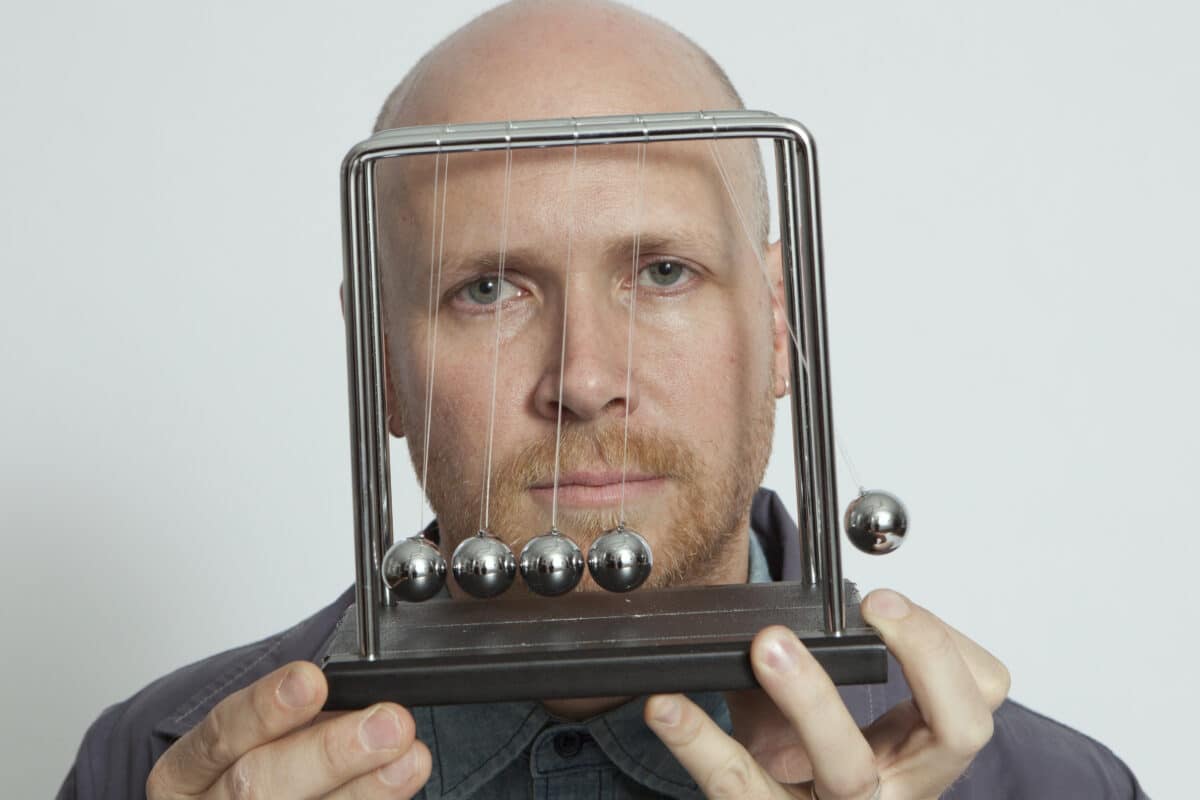

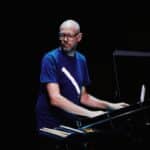
CS: Of course. There’s been a very strong movement towards honoring the original historical performance practice. I’ve done a lot of that myself, like, ‘How was Bach or Montverde played in this particular way? How do you phrase it? What is the amount of ornamentation? What’s on the page? What’s off the page? What was done?’ Those conversations can become a little dogmatic. ‘No, this was how it was done, and when it says this, it means this.’ My whole thing is, I want to honor the performance practice of today. I want to hear someone play a Mendelssohn quartet and decide to not play piano when it says piano. Really, the question is, what do I want it to sound like? Can I live in a world where, sure, sometimes I honor every single dynamic in Mozart 387, or sometimes I decide I want it to be different? It’s 2022! What’s the performance practice of Mozart today? Can it be more open than it has been? That’s the world I grew up in. On the page, it says there is a crescendo to mezzo-forte, which is different from forte, and there’s a tenuto mark, and there is a carrot. And what does the carrot mean in early Mozart? I have had all those discussions, and it’s funny throwing it all out. I’m a composer, and sometimes, I had to send a piece in; I decided it was going to be forte there, and maybe crescendo, but I didn’t decide this or that. You have to decide something one day, and it’s on the page. But you and I both know that music is wildly off the page and those decisions aren’t necessarily fixed.
JT: Mostly I feel as Sō Percussion, even with scores we get from composers, we’re going to start on the page, and then we’re going to allow ourselves to move. But we’re gonna start there, and then decide, based on our relationship, where it needs to move. For students learning a Mozart quartet, do you start in that moment of ‘what does this carrot mean?’ and then earn the off the page-ness?
CS: There’s a difference between students and a quartet that’s played together for ten years, where they have 100% earned the off-the-page-ness. I worked with some professionals recently and we were playing a Mozart quintet together. I was like, ‘What if we just didn’t do that?’ And they were kind of like, ‘Oh!’ We were also playing my music; you’ve seen me, I’m flexible. For students, I think that the very traditional approach can be good because they have something to go off of. It’s also a matter of: what is the meaning for them in playing this music as undergraduates in that point in their life? What’s the journey that’s interesting for them to take in learning an older repertoire piece? How would that maybe help them appreciate the detail of this music, or understand what it’s like to have a conversation in the group, where you’re working from a given text and you have to interpret it together? I think that’s one of the great lessons in chamber music. It’s not whether or not you play the articulation correctly. It’s, have you learned to talk with each other about it? I think at the end of the day, I would probably support your method of coaching these students and saying, let’s return to this text to figure out ways to talk about it.
JT: I was thinking about our collaboration on Let the Soil…, but also the others. You collaborate in so many different scenarios—you throw in jugglers with dancers and quartets. What’s your advice for a good collaboration? When you come into a new collaboration, what’s the mindset that’s going to help get somewhere interesting? People have been asking us about that with our work. I’ve started to think about a couple things that feel like they’ve been key for us—but what do you think about?
CS: Broad-stroke ideas like patience, kindness, understanding, listening. I feel like when I first started working with you guys on Narrow Sea, I remember the fear and anxiety that I had going up to Bard, and saying, ‘Alright, I want this to be more open, I don’t want to just write the piece and have it be done,’ and you didn’t want that either. But it was scary; it’s really different. The gift that you gave me in those first couple of days was enthusiasm—the sort of ‘yes, and…’ approach. Also: patience, kindness, respect, and understanding, and there was a very positive feel in the room. But there was also an acceptance of failure, an understanding that some things won’t work, that that’s okay, and we move on. I really, really appreciated that. It took me a couple of days to settle in, but you were all very open and generous and collectively curious, which made me feel comfortable to try something that I hadn’t tried before. Like, here’s a simple thing that not complicated; it’s not impressive; it’s not fancy. Could we just hear it? And you’re always so game for that. I think in that process for Narrow Sea, I felt so welcomed into your world that we made really good soil for the next project, and I think that’s what I was thinking of when I wrote that song [“Let the Soil Play Its Simple Part”]. The soil is: if you just let everybody be, and play their simple part, let everybody be what they need to be—sometimes you’re small, sometimes it’s large—then you can grow something that was a little bit unexpected. I want to take a moment to thank you guys for that.
JT: We get to play this music again soon.
CS: I know. We’ve got to remember how to do it again.

